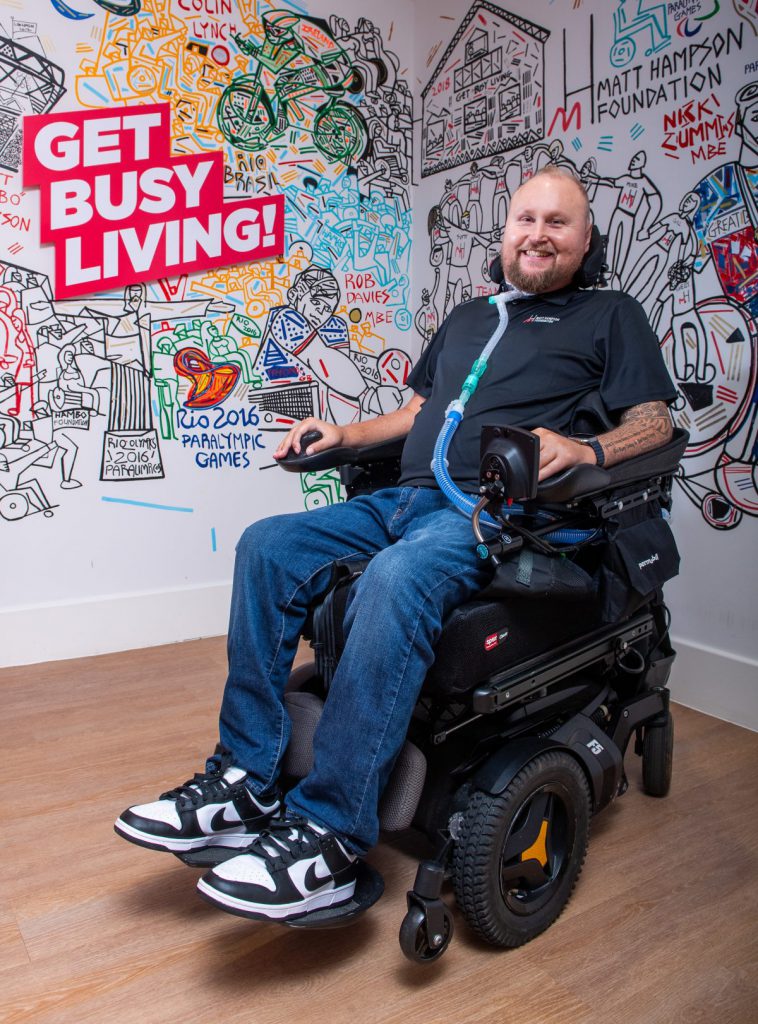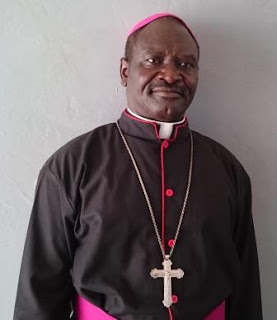Many of us know that, here at St. Anthony’s, we talk about suffering a few times every year in order to find strength and encouragement in Jesus. Perhaps each of us could respond to the following statements regarding the meaning of suffering: I see benefits from the suffering I’m going through right now. Yes, no, or somewhat? I know what God is trying to do through my suffering right now. Yes, no, or somewhat? Deacon Andrew causes me great suffering. Yes or yes?
I must say, when talking about the meaning of suffering, I don’t want to offer cold comfort. Sometimes, when we suffer, we don’t see any good because we’re in so much pain. I’m sorry if you’re in this state right now.
Here’s the teaching we’re going to draw from the Second Reading: If we’re in great pain, don’t start by asking ‘Why?’ Don’t ask why we’re suffering or what good will come from it. Start by asking, ‘What?’ What can I do? More specifically, what can I do to help others? We’ll get to the why afterwards. The Reading says, “Because Jesus himself was tested by what he suffered, he is able to help those who are being tested” (2:18). Jesus knows what it’s like to be abandoned, physically and mentally tortured, and even feel abandoned by God the Father, and so He can help everyone who suffers similarly. That’s a consolation: He’s not just someone who helps, but someone who understands what we’re experiencing.
I read about a teenager from Texas who became a quadriplegic. But she spent her days reading newspapers and watching TV: Whenever there was a story about someone suffering, she would have someone put a stick in her mouth and type out a letter of encouragement to them (Stephanie Gray, On Assisted Suicide, 10). Through her own trials, she was able to help others who were undergoing great trials.
Matt Hampson also became a quadriplegic after a rugby accident, but he started the Get Busy Living Centre, because, as he said in his TED talk, ‘We can get busy living, or get busy dying.’ The centre helps people with rehabilitation, encouragement, and community.
In these two cases, notice that the individuals didn’t focus on why they were suffering and didn’t focus on what they could no longer do. They focused on the question of ‘What’: What can I do? What can I do to help others? I’m not saying this is easy. All I’m saying is that it’s a good place to start when we’re suffering.
A man named Peter, after a long beautiful marriage, with years spent taking care of his sick wife, became a widower in 2017, and there was a complete void in his daily life. However, he now regularly visits people who are desperately lonely in nursing homes.
Ven. Archbishop Sheen’s advice for people who are suffering from anxiety about their lives, what he calls an existential neurosis, is: Go help your neighbour. He says the prayer comes after that (Life is Worth Living, 6). When we ourselves are suffering, first go help others, and then pray. That is what we can do.
Now let’s get into the why. The Second Reading says, “It was fitting that God, for whom and through whom all things exist, in bringing many sons and daughters to glory, should make the source of their salvation perfect through sufferings” (Heb 2:10). The Letter to the Hebrews was written to a group of Christians being persecuted, and the author was trying to help them understand that Jesus’ priesthood involves suffering because priesthood is about sacrifice. ‘It was fitting’ means that what might seem inappropriate for us makes sense in God’s plan (Dr. Mary Healy, Hebrews in Catholic Commentary on Sacred Scripture, 61), and that plan is to bring ‘many sons and daughters to glory,’ meaning heaven. Now heaven is the state of perfect love, where God’s love not only comes to us but out of us, meaning those in heaven have to love like God. So, how do we get to that state? We need to grow in love. God’s plan was that He would ‘make the source of [our] salvation perfect through sufferings.’ The Father’s plan was that Jesus, in His humanity, would grow into perfect love through suffering, so that we who are united to Him would enter into that love.
Remember the observations of Viktor Frankl, a Jewish psychotherapist put in Auschwitz during the Holocaust? One time, when returning from work, all the prisoners lined up for food. And there was only one prisoner serving the soup who never looked at who was receiving: He gave out the food equally. Most prisoners, when serving, would favour their friends, dipping the ladle down to the bottom for the potatoes; but, for others, they would skim the surface and only give watery soup (Man’s Search for Freedom, 47). He wrote, “We who lived in concentration camps can remember the men who walked through the huts comforting others, giving away their last piece of bread. They may have been few in number, but they offer sufficient proof that everything can be taken from a man but one thing: the last of the human freedoms—to choose one’s attitude in any given set of circumstances, to choose one’s own way” (65-66).
Jesus had two natures: human and divine. His divine nature could already love perfectly. But His human nature had to grow, and it grew through suffering. ‘To make perfect’ means that His human nature was divinized, that is, God was making it like Himself. And, in the Greek Old Testament, this verb is used three times to describe the ordination of priests. Jesus was ordained, if you will, through His suffering on the Cross. Indeed, a priest is truly a priest when He’s offered up like Christ for the good of others.
This is Bishop Yunan Tombe of Sudan, who said, “I was born in war, brought up in war, and studied in war… Perhaps that has helped me to get through this, and to understand that it is possible to do more, and that God is with us.” Since 2008, over 500,000 people have died in Sudanese conflicts. Bishop Tombe shared a story from the first day of bombing. While praying there before the Blessed Sacrament, Muslim soldiers came in looking for shelter, and found peace in the chapel. He said, “After three hours, the fighting subsided, and they all left… But after some hours… one of them came back and told me, while pointing at the tabernacle: ‘Bishop, this candle is strong… It has protected us.’ He didn’t understand that the candle was there because of the Blessed Sacrament. From that day, I took up the candle and the Blessed Sacrament as my strength, and I have managed to have adoration every day, four times a day. I divide my time between the people and God. I get my strength from the Blessed Sacrament and believe that this is my strength and my joy”. That is a great priest who is becoming like Christ!
And what does he and his fellow Catholics do in a war-torn country? They love Jesus and help others. In their city of El-Obeid, they still run 13 schools while all the rest have closed, leading the governor to thank them for keeping the schools running.
In addition, because they’re following Jesus in His suffering and love, they have 70 men in the seminary and Bishop Tombe will be ordaining six men this year.
Next week, we start our annual four-part pro-life series. For years, we’ve presented it on abortion; last year we treated in-vitro fertilization; this year, we’re going to talk about euthanasia. Today’s homily is a good preparation for the topic because it gives us the biblical perspective on human suffering.
When we look at the Cross, we see that Jesus lost everything, and yet still loved perfectly. Keep in mind that we don’t have to suffer forever. We only have this life as our short time to grow in love, and Jesus gives us more help than we realize. When we suffer, don’t start with ‘Why?’ Start with: What can I do to help others the way Jesus did?




